Motion User Guide
- Welcome
- What’s new in Motion
-
- Intro to basic compositing
-
- Intro to transforming layers
-
- Intro to transforming layers in the canvas
- Transform layer properties in the canvas
- Transform tools
- Change layer position, scale, or rotation
- Move a layer’s anchor point
- Add a drop shadow to a layer
- Distort or shear a layer
- Crop a layer
- Modify shape or mask points
- Transform text glyphs and other object attributes
- Align layers in the canvas
- Transform layers in the HUD
- Transform 2D layers in 3D space
-
- Intro to behaviors
- Behaviors versus keyframes
-
- Intro to behavior types
-
- Intro to Parameter behaviors
- Audio behavior
- Average behavior
- Clamp behavior
- Custom behavior
- Add a Custom behavior
- Exponential behavior
- Link behavior
- Logarithmic behavior
- MIDI behavior
- Add a MIDI behavior
- Negate behavior
- Oscillate behavior
- Create a decaying oscillation
- Overshoot behavior
- Quantize behavior
- Ramp behavior
- Randomize behavior
- Rate behavior
- Reverse behavior
- Stop behavior
- Track behavior
- Wriggle behavior
-
- Intro to Simulation behaviors
- Align to Motion behavior
- Attracted To behavior
- Attractor behavior
- Drag behavior
- Drift Attracted To behavior
- Drift Attractor behavior
- Edge Collision behavior
- Gravity behavior
- Orbit Around behavior
- Random Motion behavior
- Repel behavior
- Repel From behavior
- Rotational Drag behavior
- Spring behavior
- Vortex behavior
- Wind behavior
- Additional behaviors
-
- Intro to using generators
- Add a generator
-
- Intro to image generators
- Caustics generator
- Cellular generator
- Checkerboard generator
- Clouds generator
- Color Solid generator
- Concentric Polka Dots generator
- Concentric Shapes generator
- Gradient generator
- Grid generator
- Japanese Pattern generator
- Lens Flare generator
- Manga Lines generator
- Membrane generator
- Noise generator
- One Color Ray generator
- Op Art 1 generator
- Op Art 2 generator
- Op Art 3 generator
- Overlapping Circles generator
- Radial Bars generator
- Soft Gradient generator
- Spirals generator
- Spiral Drawing generator
- Use Spiral Drawing onscreen controls
- Star generator
- Stripes generator
- Sunburst generator
- Truchet Tiles generator
- Two Color Ray generator
- Save a modified generator
-
- Intro to filters
- Browse and preview filters
- Apply or remove filters
-
- Intro to filter types
-
- Intro to Color filters
- Brightness filter
- Channel Mixer filter
- Color Adjustments filter
- Color Balance filter
- Example: Color-balance two layers
- Color Curves filter
- Use the Color Curves filter
- Color Reduce filter
- Color Wheels filter
- Use the Color Wheels filter
- Colorize filter
- Contrast filter
- Custom LUT filter
- Use the Custom LUT filter
- Gamma filter
- Gradient Colorize filter
- HDR Tools filter
- Hue/Saturation filter
- Hue/Saturation Curves filter
- Use the Hue/Saturation Curves filter
- Levels filter
- Negative filter
- OpenEXR Tone Map filter
- Sepia filter
- Threshold filter
- Tint filter
-
- Intro to Distortion filters
- Black Hole filter
- Bulge filter
- Bump Map filter
- Disc Warp filter
- Droplet filter
- Earthquake filter
- Fisheye filter
- Flop filter
- Fun House filter
- Glass Block filter
- Glass Distortion
- Insect Eye filter
- Mirror filter
- Page Curl filter
- Poke filter
- Polar filter
- Refraction filter
- Ring Lens filter
- Ripple filter
- Scrape filter
- Sliced Scale filter
- Use the Sliced Scale filter
- Sphere filter
- Starburst filter
- Stripes filter
- Target filter
- Tiny Planet filter
- Twirl filter
- Underwater filter
- Wave filter
-
- Intro to Stylize filters
- Add Noise filter
- Bad Film filter
- Bad TV filter
- Circle Screen filter
- Circles filter
- Color Emboss filter
- Comic filter
- Crystallize filter
- Edges filter
- Extrude filter
- Fill filter
- Halftone filter
- Hatched Screen filter
- Highpass filter
- Indent filter
- Line Art filter
- Line Screen filter
- MinMax filter
- Noise Dissolve filter
- Pixellate filter
- Posterize filter
- Relief filter
- Slit Scan filter
- Slit Tunnel filter
- Texture Screen filter
- Vignette filter
- Wavy Screen filter
- About filters and color processing
- Publish filter controls to Final Cut Pro
- Using filters on alpha channels
- Filter performance
- Save custom filters
-
- Intro to 3D objects
- Add a 3D object
- Move and rotate a 3D object
- Reposition a 3D object’s anchor point
- Exchange a 3D object file
- 3D object intersection and layer order
- Using cameras and lights with 3D objects
- Save custom 3D objects
- Guidelines for working with 3D objects
- Working with imported 3D objects
-
- Intro to 360-degree video
- 360-degree projects
- Create 360-degree projects
- Add 360-degree video to a project
- Create a tiny planet effect
- Reorient 360-degree media
- Creating 360-degree templates for Final Cut Pro
- 360-degree-aware filters and generators
- Export and share 360-degree projects
- Guidelines for better 360-degree projects
-
- Intro to settings and shortcuts
-
- Intro to Keyboard shortcuts
- Use function keys
- General keyboard shortcuts
- Audio list keyboard shortcuts
-
- Tools keyboard shortcuts
- Transform tool keyboard shortcuts
- Select/Transform tool keyboard shortcuts
- Crop tool keyboard shortcuts
- Edit Points tool keyboard shortcuts
- Edit shape tools keyboard shortcuts
- Pan and Zoom tools keyboard shortcuts
- Shape tools keyboard shortcuts
- Bezier tool keyboard shortcuts
- B-Spline tool keyboard shortcuts
- Paint Stroke tool keyboard shortcuts
- Text tool keyboard shortcuts
- Shape mask tools keyboard shortcuts
- Bezier Mask tool keyboard shortcuts
- B-Spline Mask tool keyboard shortcuts
- Transport control keyboard shortcuts
- View option keyboard shortcuts
- HUD keyboard shortcuts
- Inspector keyboard shortcuts
- Keyframe Editor keyboard shortcuts
- Layers keyboard shortcuts
- Library keyboard shortcuts
- Media list keyboard shortcuts
- Timeline keyboard shortcuts
- Keyframing keyboard shortcuts
- Shape and Mask keyboard shortcuts
- 3D keyboard shortcuts
- Miscellaneous keyboard shortcuts
- Touch Bar shortcuts
- Move assets to another computer
- Work with GPUs
- Glossary
- Copyright

Enable Cinematic mode video adjustments in Motion
Before you can view and adjust focus points in Cinematic mode video clips, you must import the clips, show the Timeline, and enable the Cinematic onscreen controls.
Step 1: Create a project and import Cinematic mode video clips
In Motion, do one of the following:
If you recorded Cinematic mode clips in HDR (the default on iPhone):Create an HDR project prepopulated with Cinematic mode clips.
If you recorded the Cinematic mode clips in SDR:Create a new project, then import Cinematic mode clips using the import command or import button or by dragging SDR clips from the Photos category in the Motion Library.
Make sure that each Cinematic clip you import is a MOV file without a capital E in its filename. See Move Cinematic mode clips to your Mac before importing them into Motion.
Note: If you want to use HDR clips in an SDR project, after importing the clips, convert them to SDR using the HDR Tools filter or by overriding the clip’s color profile. See Adjust HDR media.
Step 2: Show the Timeline to display the Cinematic clip’s focus points
In Motion, click the Show/Hide Timeline button in the timing toolbar.
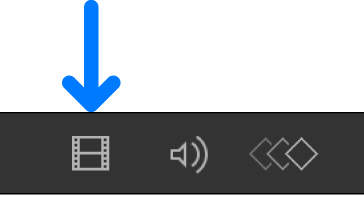
In the Timeline, two kinds of focus points appear along the bottom of the Cinematic clip’s timebar:
Automatic focus points: These are created automatically while recording in Cinematic mode in the Camera app. In the Timeline in Motion, automatic focus points appear as white dots.
Manual focus points: These are created manually while recording in Cinematic mode in the Camera app when you tap the iPhone screen (to focus on a particular element in the scene). In the Timeline in Motion, manual focus points appear as yellow dots.
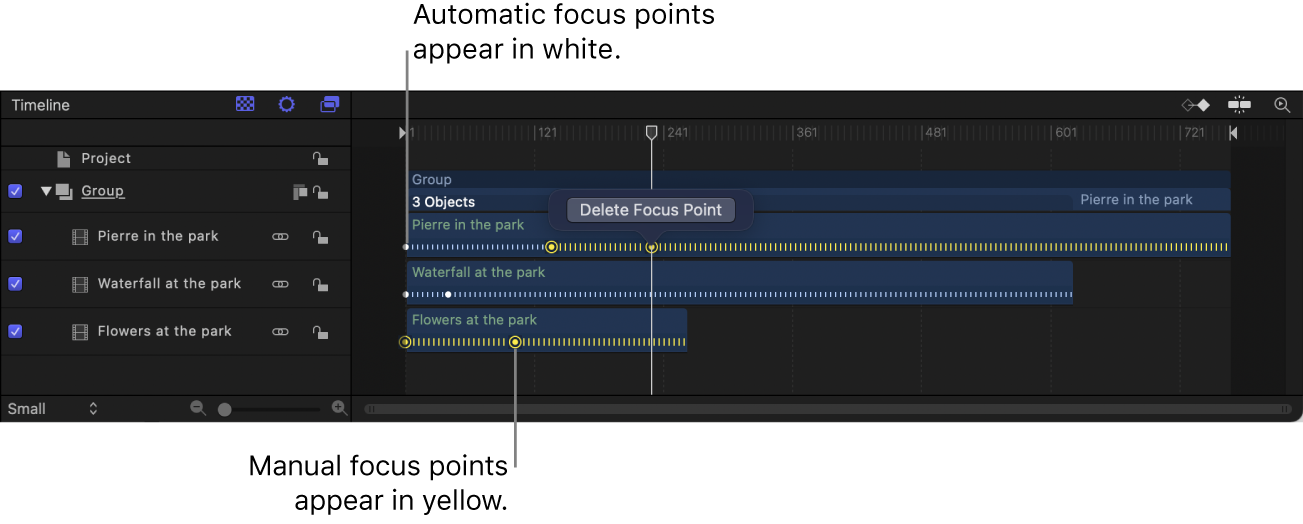
Focus points are not keyframes—they represent focus decisions created when the video was recorded.
Step 3: Show the Cinematic onscreen controls in the canvas
In the Layers list or Timeline in Motion, select a Cinematic clip.
Do either of the following:
In the canvas toolbar, click and hold the transform tools pop-up menu, then choose Cinematic.
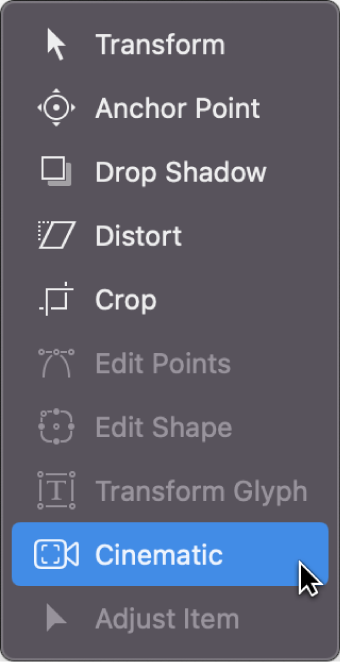
Control-click in the canvas, then choose Cinematic.
Note: If the Cinematic tool isn’t available, make sure to select the Cinematic activation checkbox in the Properties Inspector.
The Cinematic onscreen controls appear in the canvas.
If you drag the playhead, different types of controls appear in the canvas around elements in the scene. These controls indicate focus decisions made while recording on iPhone, either automatically (by the Camera app) or manually (by the person recording the video). There are four types of controls:
Item
Name
Description
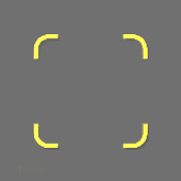
Current focus indicator
Yellow brackets indicate the current subject or area of focus tracked automatically by the camera.

Suggested focus indicator
White frames indicate potential subjects of focus tracked automatically by the camera. Move the pointer over the canvas to reveal additional suggested focus points. You can convert a suggested focus point to the current subject of focus.
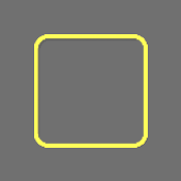
AF tracking lock
A yellow frame indicates the current subject or area of focus set manually by the user (during recording or in Motion). AF tracking lock focuses on a subject while following its movement, even when other potential subjects of focus appear in the clip.

AF lock
A small yellow square with tick marks indicates a fixed-focus point set manually by the user (during recording or in Motion). AF lock focuses on a specific area of the clip at a specific distance from the camera, ignoring all other elements in the clip (until the next focus change).
Note: The colors of the onscreen controls have been brightened for illustrative purposes in this user guide. The controls appear muted in the Motion canvas. Depending on focus decisions made by the user during recording, some of the controls described above may not appear in the canvas.
Download this guide: PDF